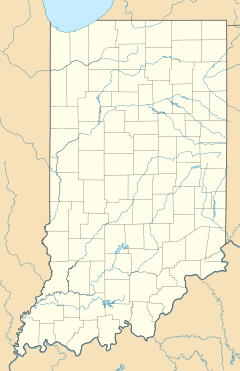Busseron, Indiana facts for kids
Quick facts for kids
Busseron, Indiana
|
|
|---|---|
| Country | United States |
| State | Indiana |
| County | Knox |
| Township | Busseron |
| Elevation | 466 ft (142 m) |
| Time zone | UTC-5 (EST) |
| • Summer (DST) | UTC-4 (EDT) |
| ZIP code |
47561
|
| Area code(s) | 812 |
| FIPS code | 18-09496 |
| GNIS feature ID | 431894 |
Busseron is a small, unincorporated community located in Knox County, Indiana, in the United States. An "unincorporated community" means it's a place where people live, but it doesn't have its own local government like a city or town does. It's part of a larger area called Busseron Township.
Contents
What is Busseron?
Busseron is a community in the state of Indiana. It's not a city or a town with its own mayor. Instead, it's a collection of homes and possibly businesses that are part of a larger county area. This type of community is common in many parts of the United States.
Where is Busseron Located?
Busseron is found in the southwestern part of Indiana. Its exact location can be pinpointed using geographic coordinates: 38°50′08″N 87°26′57″W. This community is specifically located within Busseron Township in Knox County.
A Glimpse into Busseron's Past
Busseron has a history that goes back to the mid-1800s. It was officially surveyed, or mapped out, on May 30, 1854. A person named George Calhoun was responsible for this important surveying work.
Who Started Busseron?
When Busseron was first established, there were several key people involved. These individuals were known as "proprietors," meaning they owned land and helped develop the community. The main proprietors were W. W. Harper, J. A. McClure, and T. P. Emison.
Busseron's Railroad Connection
For a long time, Busseron was known for its connection to the railroad. It served as a station along the Evansville & Terre Haute Railroad line. This meant trains would stop there, which was important for travel and trade in the area. By the 1920s, Busseron was seen less as a traditional town and more simply as a railroad stop. This shows how its main purpose shifted over time.



